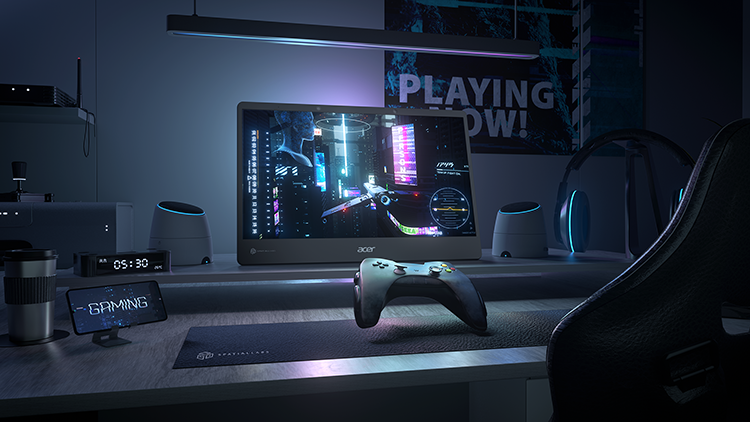3D technology seems to have gone the way of the dinosaurs when it comes to TVs and monitors. However, Acer is looking to bring it back with a slew of new products and software built around SpatialLabs’ stereoscopic 3D technology. Of course, this isn’t their first foray into the space, they announced a SpatialLabs Edition of their ConceptD 7 creator laptop last year. This year, the company has already announced their new Predator Helios 300 SpatialLabs edition which is poised to revolutionise gaming with stereoscopic 3D.
Acer SpatialLabs View & View Pro Displays
Joining this lineup of devices are two new displays equipped with 4K resolution and SpatialLabs technology. The new Acer SpatialLabs View and View Pro displays bring stereoscopic 3D mainstream and make them more accessible than ever before. The small, 15.6-inch form factor of both displays combined with the lightweight build makes them ideal companions for creators and even gamers looking for an enhanced experience.



The SpatialLabs View and View Pro are also being geared for commercial use with organisations like the National Taiwan Museum to bring inanimate, ancient artefacts back to life. The small, portable form factor of the displays also allows it to be transported without much hassle to be used by designers to bring their renders beyond the display and for gamers to delve into the metaverse. The experience is enhanced with the 100% coverage of the Adobe RGB gamut.
One Click Stereoscopic 3D Gaming with TrueGame
Of course, with the rollout of two laptops and displays, Acer isn’t just leaving users in the lurches. In particular, when it comes to their recent announcement of the Predator Helios 300 SpatialLabs Edition, the company is bundling software that will allow users to experience stereoscopic 3D with a single click.

SpatialLabs TrueGame will take advantage of depth data already present in games to create a more immersive experience for gamers. This is possible as designers already design objects, characters and worlds in games with depth data. TrueGame uses this data to generate realistic, immersive worlds that revolutionise the gaming experience. The application will be launching with over 50 game titles that will have optimised profiles for a better stereoscopic 3D experience. There will be more profiles added as time passes.
That said, SpatialLabs TrueGame will be able to generate stereoscopic 3D for just about any 3D game. It’s as simple as launching the game with the TrueGame application. Once launched, SpatialLab’s technology takes over and generates the world in realistic, stereoscopic 3D.
Create in Native 3D and Transform 2D assets with SpatialLabs Go and Model Viewer
Together with TrueGame, Acer is also including SpatialLabs Go and ModelViewer in its SpatialLabs editions. Creators will be able to immerse themselves in their creations with Model Viewer while Go will allow them to bring 2D assets into the 3D space.
SpatialLabs Go utilises AI technology to generate stereoscopic 3D content from almost anything with the press of a button. It will be able to transform simple pictures into 3D experiences and even bring you into the world of The Wheel of Time and follow more realistically the adventures that occur there. It also brings 3D creation to the fingertips of those who have no experience in creating in 3D by turning pictures and videos into immersive 3D experiences.

With SpatialLabs Model Viewer, users will be able to all major file formats natively on the View Pro. This allows users to create with peace of mind as they show work on their creation or even show it off on the Acer SpatialLabs View Pro. The software is able to work with files created in programs such as Datasmith, Revit, Solidworks and Cinema4D. It even works with Maya and Blender allowing on the fly creation in both 2D and 3D.





Acer is banking hard on stereoscopic 3D technology with these announcements and they look poised to be ahead of the game. While many others have tried and given up, the company is looking to bring a more immersive and realistic experience as the world braces itself for the advent of the metaverse.





